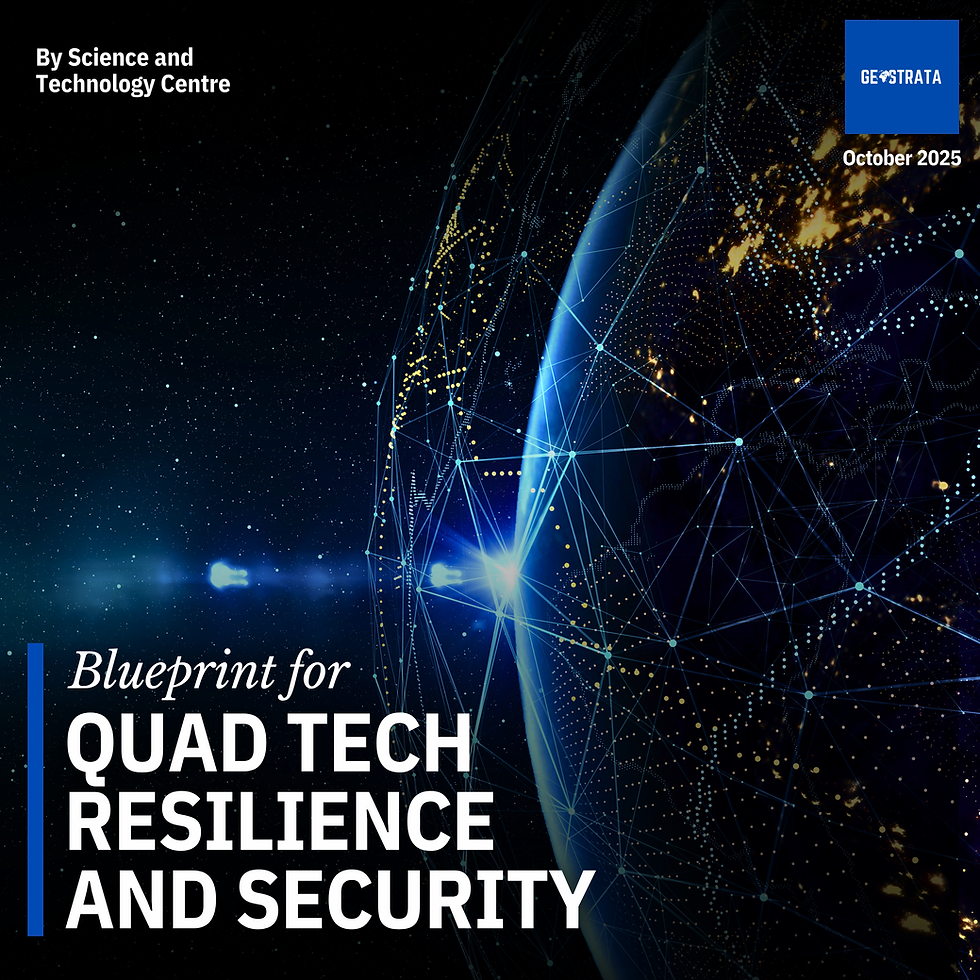Delhi-Colombo Nexus: Blueprint for South Asian Economic Unity
- THE GEOSTRATA

- Jun 18
- 4 min read
Updated: Jul 13
The Delhi-Colombo economic partnership, by addressing shared challenges like trade management and external influences as well as fostering sustainable development, holds the potential to transform South Asia into a more integrated and stable region, leading to the solidification of India’s leadership as a regional power.

Illustration by The Geostrata
HISTORICAL CONTEXT
As an exemplary tie that dates back centuries, India and Sri Lanka share a rich history of economic, cultural, and political cooperation. Several contributing factors, such as geographical proximity, shared colonial past, and interconnected economies, have made the two nations natural partners in regional development. With its origin from early maritime trade under the Chola Empire and spanning to British colonial rule, they have maintained strong relations in commerce.
Post-independence following international conflicts in the region, both countries engaged in numerous bilateral agreements, including the Indo-Sri Lanka Free Trade Agreement (ISFTA) in 1998, that promised to enhance trade and economic integration.
IMPORTANCE OF REGIONAL COOPERATION
In the contemporary global order, economic resilience determines a nation's position and in order to maintain that, regional cooperation is a requisite factor. Despite being one of the most populous regions, South Asia remains economically under-integrated due to internal conflicts, trade barriers, and geopolitical challenges. In this context, the Delhi-Colombo economic partnership offers a blueprint for enhancing regional cooperation, stability, and sustainable development.
The economic establishment between India and Sri Lanka is not only about bilateral trade—it has broader implications for South Asia as a larger picture. By addressing shared challenges such as trade imbalances, infrastructure gaps, and external influences, the Delhi-Colombo economic partnership can demonstrate the effectiveness of India’s Neighbourhood First Policy in building trust and cooperation. If successful, this model can lay the foundation for greater regional economic unity and solidify India’s leadership role in the near future.
PARTNERSHIP AGREEMENT: AN OVERVIEW
India and Sri Lanka have undertaken many key economic agreements that have strengthened their partnership. The ISFTA allowed Sri Lanka to benefit from tariff concessions, which helped in increasing its exports to India.
In addition, agreements on energy cooperation, port development, and infrastructure projects have further deepened economic ties.
One such example is the joint development of the Trincomalee Oil Tank Farm, which enhances energy security for both nations. The Economic and Technology Cooperation Agreement (ETCA) is another initiative aimed at expanding trade in goods and services, fostering investments, and enabling technology exchange.
India and Sri Lanka's economic ties are on a promising growth path, with India as Sri Lanka’s largest trading partner. The recent visit of Sri Lankan President Anura Kumara Dissanayake to India reaffirmed both nations' commitment to strengthening their partnership for mutual benefit and the well-being of their people.
POTENTIAL BENEFITS FOR SOUTH ASIA
An enhanced economic alliance between Delhi and Colombo can significantly impact South Asia.
Economic Integration: Enhancement in trade facilitation, reduction of tariffs, and improved logistics can increase intra-regional investment. This would create a robust South Asian economic bloc.
Conflict Resolution and Stability: Economic collaboration can adjacently contribute to regional peace as tensions are lessened arising from economic disparities. A stable Sri Lanka also benefits India’s security and economic interests.
Infrastructure Development: Joint investment in infrastructure projects, such as ports and highways, can create a seamless commercial network across the subcontinent. Improved connectivity can facilitate smoother trade and attract foreign direct investment (FDI).
REINFORCEMENT OF INDIA'S NEIGHBOURHOOD FIRST POLICY
India’s Neighbourhood First Policy consistently emphasises building strong economic and political relations with its immediate neighbours.
Hence, the Delhi-Colombo partnership aligns with this vision in several ways:
Measures to Build Trust: Economic cooperation strengthens diplomatic relationships. Investments in Sri Lanka's infrastructure and economic stability strengthen India's dedication to regional growth.
Humanitarian and Developmental Aid: India’s support during Sri Lanka’s economic turmoil, which includes credit lines and the provision of essential goods, highlights its position as a responsible regional leader.
Strategic Alliances: Enhancing economic relationships aids in offsetting China's increasing dominance in Sri Lanka. India’s active involvement guarantees that Sri Lanka stays a crucial component of South Asia’s regional structure instead of becoming excessively reliant on foreign influences.
INDIA'S STATUS AS A REGIONAL POWER
An effective Delhi-Colombo economic framework would strengthen India’s status as a regional leader in various manners:
Tackling Multilateral Issues: South Asia encounters trade discrepancies, climate risks, and infrastructure shortfalls. By spearheading economic integration initiatives, India can demonstrate its ability to offer solutions.
Combating External Pressures: China's Belt and Road Initiative (BRI) has established notable progress in South Asia, with Sri Lanka serving as a major beneficiary of Chinese funding. The lease of Hambantota Port to China has sparked strategic worries for India. A robust economic framework between India and Sri Lanka can act as a balance against these external dependencies.
Broadening Soft Power Reach: Economic leadership is enhanced by cultural and educational interactions, bolstering India’s soft power footprint in the area.
POTENTIAL CHALLENGES
While the Delhi-Colombo partnership presents numerous opportunities, underlying challenges remain:
Political Instability: Previous occurrences such as Sri Lanka’s economic crisis and political transitions pose risks to long-term economic agreements. India must engage diplomatically to ensure policy continuity.
External Competition: China’s financial investments and infrastructure projects in Sri Lanka substantially challenge India’s influence. India in response, must provide competitive and sustainable alternatives to maintain its economic leadership.
Domestic Concerns: Protectionist policies, bureaucratic hurdles, and opposition from local industries in both countries may slow down the implementation of agreements. A well-structured policy framework is required to address these concerns.
The Delhi-Colombo economic partnership is more than a singular bilateral success story—it is a blueprint for South Asian economic unity. Strengthening economic ties among South Asian nations can lead to collective prosperity, thereby reducing dependency on external powers.
For South Asia to achieve economic integration, India must continue to lead through strategic diplomacy, infrastructure investments, and liberalization of trade.
The Delhi-Colombo model can serve as a stepping stone for broader regional agreements, and potentially pave the way for a stable and an interconnected South Asia. By strengthening its economy, diplomatic influence, and commitment to regional growth, India has the opportunity to shape South Asia’s future through a multilateral approach.
By engaging with regional and global institutions, fostering economic cooperation, and promoting inclusive dialogue, India can drive sustainable development and long-term stability in the region.
BY KUSHUMIKA SIKDAR
TEAM GEOSTRATA
.png)







Comments